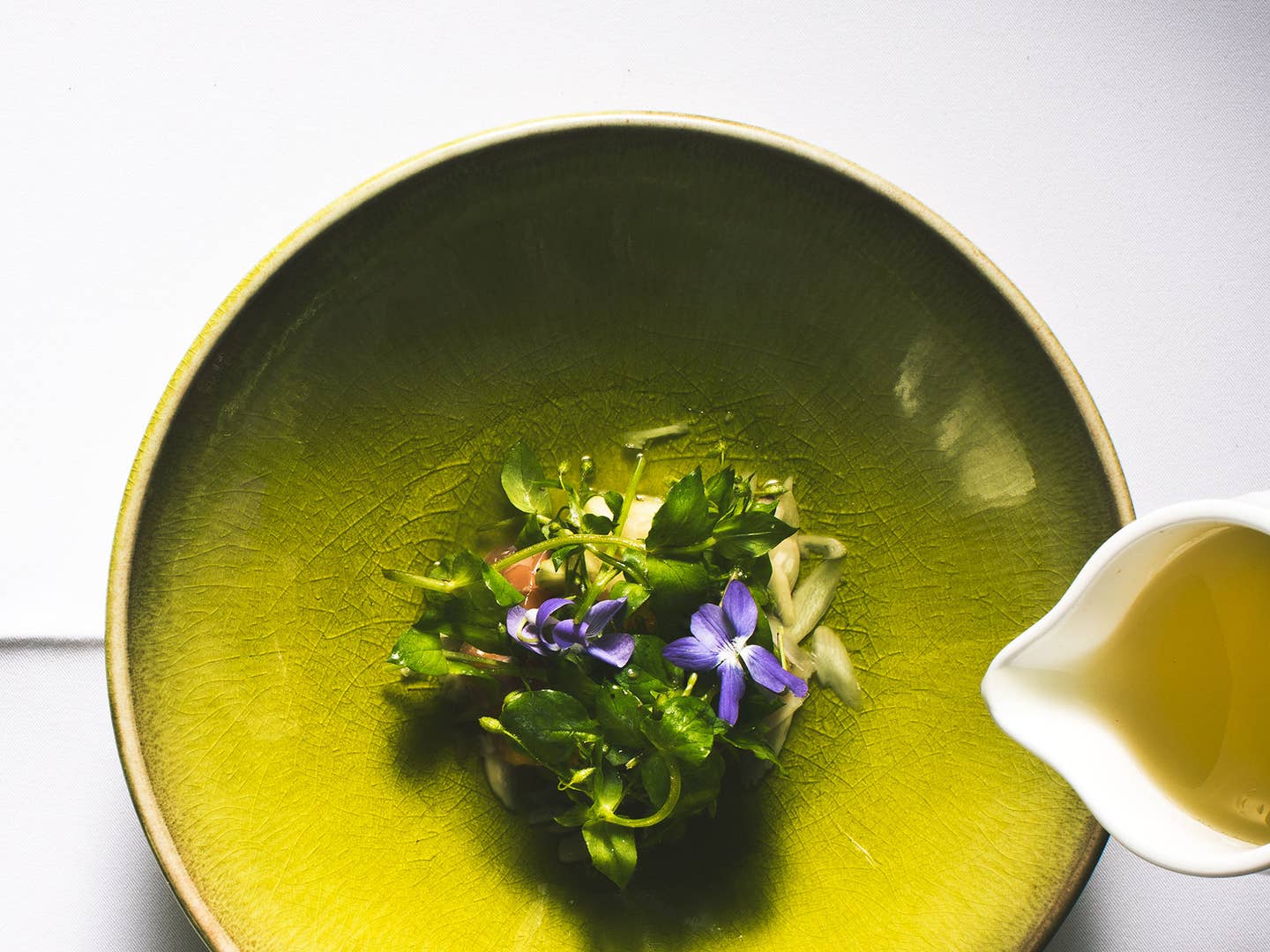
Slovenia’s Best Chef is Reviving its Delicious, Endangered Fish
The country’s native marble trout has been on the decline for years, but Ana Roš, Trout Whisperer, is bringing new life to the old stock
Just outside a side door to the kitchen of Hiša Franko, a mountain inn and restaurant in Slovenia's Soča Valley near the Italian border, the chef Ana Roš showed me a cement tank covered by a thin, metal grate where she keeps her fish. Water from a stream that runs adjacent to the nearly 150-year-old house is siphoned into the tank so there's always a natural current. Inside, a few trout are swimming around; most are rather common rainbow trout, but there's a much larger, four or five kilo fish, with a marbled body and red coloration, hovering in the corner. It's a marble trout, Salmo marmoratus.
“It can’t be farmed. It’s not a joke,” says Roš as we watch someone from the kitchen staff pull one out with a net. “They need cold water. They need oxygen.”
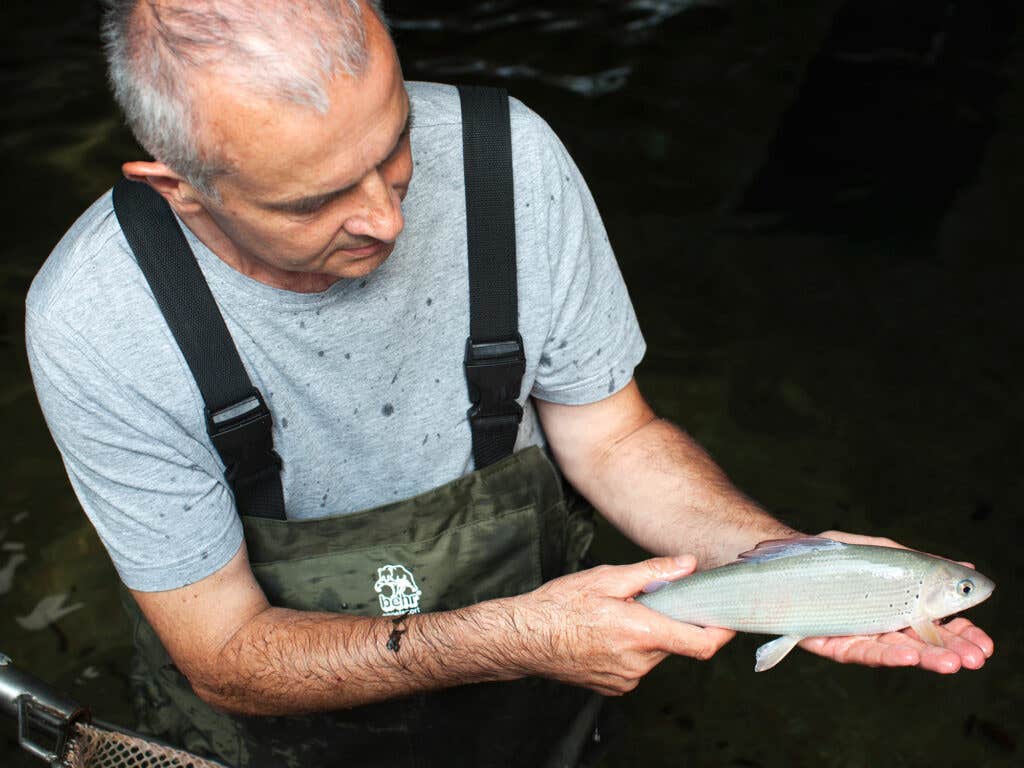
Later that night, for dinner, she filets the trout and serves it raw. She adds only some fermented cottage cheese made up in the mountains that rise behind the restaurant to give it some zing.
I'm not usually crazy about trout, but this fish is wonderfully fatty and has a really deep, rich flavor that comes from the marble’s slow growth. Other times she accentuates it with flavors from around the valley, like rubbing it with spruce salt and sugar then serving it in a salad with raw almonds, chickweed, green peas, and unripe strawberries. Another time it’s the star of the main course with reduced whey, puffed buckwheat, sprouts, and oil infused with citronella geranium and mint. The unusual fish stands out among the already overwhelming sense of place that runs through the restaurant, from the fermented apple peels used as a starter for the bread to the wheels of Tolmin cheese that are aging downstairs in their cellar.
“I find it so almondy. Nutty, almondy,” she tells me. “It has a beautiful texture. Really something exceptional.”
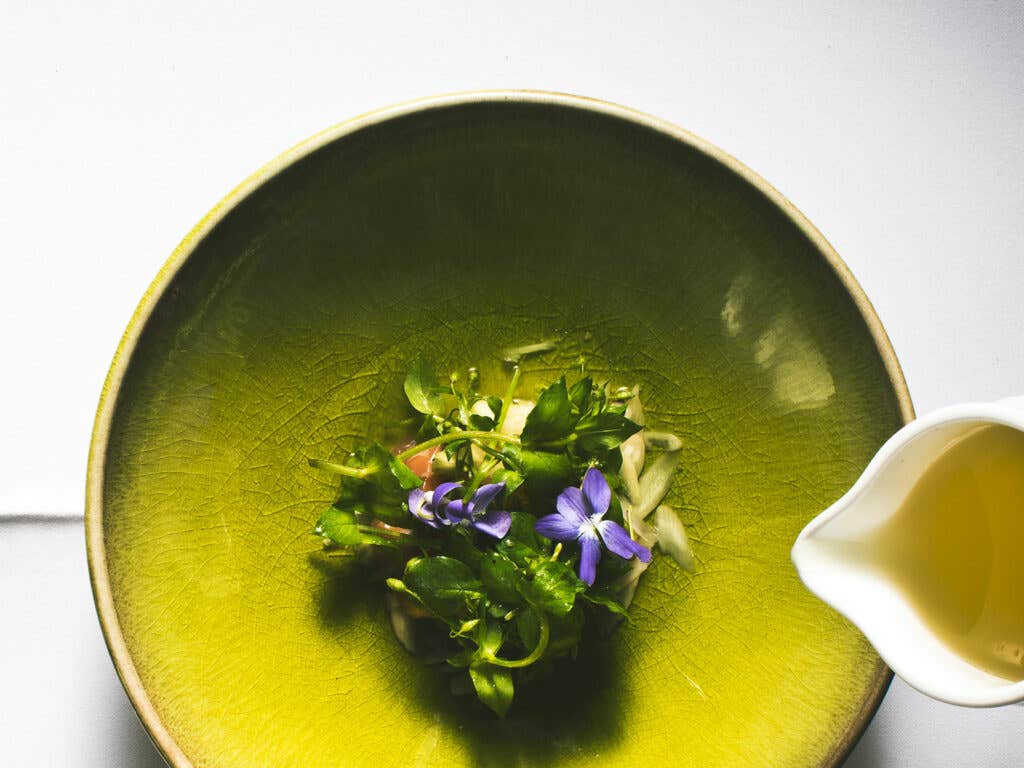
According to Roš and her husband, Valter Kramer, the restaurant’s sommelier, the marble trout’s range is limited to just a few rivers in the Adriatic basin, though dams and hybridization have nearly wiped it out in most of the other rivers. The turquoise Soča River, a short walk from the restaurant, boasts the highest percentage of true marble trout. While the Soča, and much of Slovenia for that matter, remains quite pristine, brown trout introduced into the river decades ago have gradually pushed the marble trout out, and have bred with the remaining populations. By the early 1990s the outlook was grim: Most of the remaining marble trout only had about 30 percent of their original marble genes.
There was one obvious question. “So, why are we eating it?” I asked Roš.
“It’s easier just to show you,” she said.
The next day we went deep in the mountains, not far from Triglav National Park, to where the Angling Club of Tolmin and the Fisheries Research Institute of Slovenia were leading a restoration effort. Situated on a hillside were a handful of covered pools where other common fish in the area, like rainbow trout and grayling, were being raised inside. In a couple of the pools, which were specially designed with a strong current to mimic the flow of the river, were the marble trout.
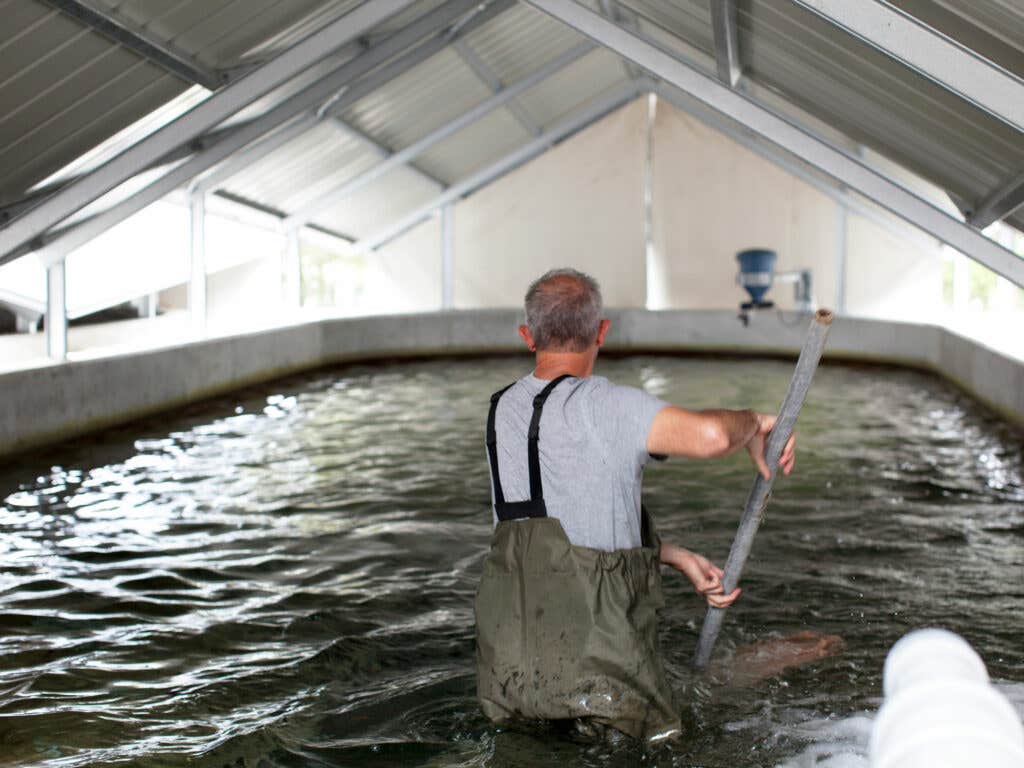
Since the 1990s, they have been breeding genetically pure marble trout from isolated headwater tributaries to release into the Soča River. These are fish that are still wild, so they haven’t adapted to being farm raised yet. Needing much more space than the other fish, the pools were practically empty. The fish are also slow to grow, taking around three to six years to mature. According to Dušan Jesenšek, who manages the project, they were six times more expensive than other trout to produce. To help make the project sustainable, they needed to be creative. That’s where Roš entered the picture.
To keep the marble genes pure in the Soča River, the second-generation fish from the hatchery couldn’t be used for repopulation efforts. So, they set them aside for gastronomy. They couldn’t sell to supermarkets, as they would squeeze the price and the nature of the project would never permit a large production. They needed a particular mindset that could help them be more resilient in the market.
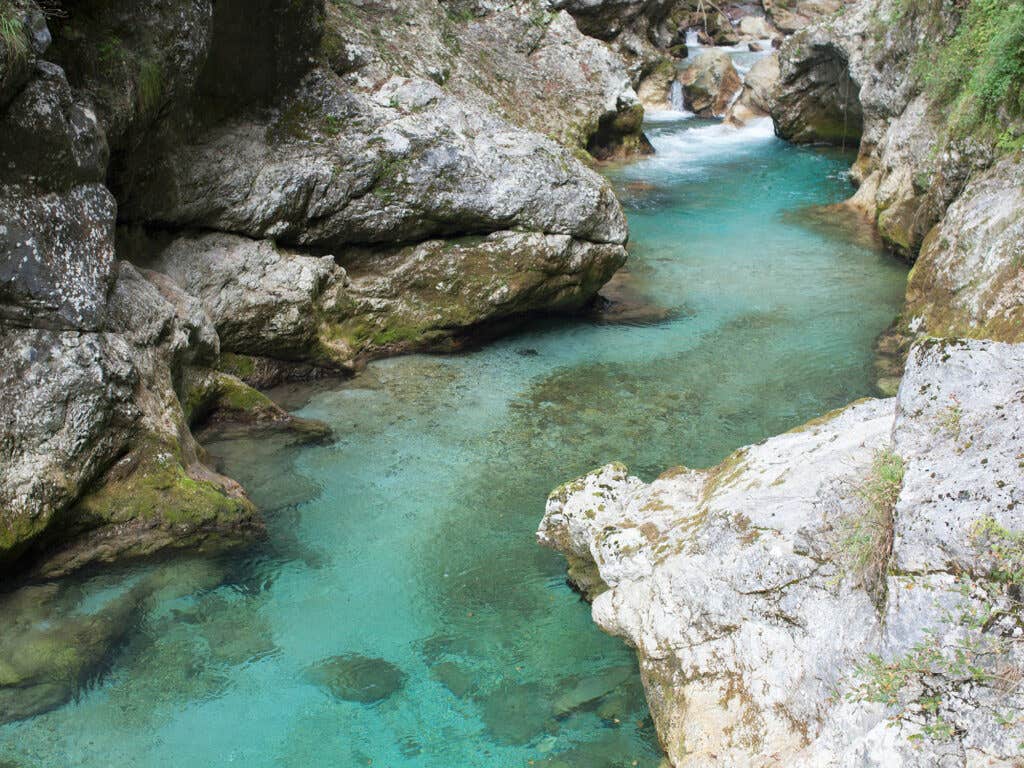
Given how protected the marble trout is, Roš assumed she would never be able to cook with the only naturally present trout in Slovenia. But she asked offhand if there were any she could use for Cook It Raw Poland in 2012, and the relationship took off. For the past four years she has kept them on the menu at Hiša Franko, which has helped raise awareness for the project while injecting it with some income. (More recently she determined that the fish were too stressed in the tanks, so she began getting daily deliveries direct from the hatchery).
“Chefs need to have an idea about the project,” said Senchek, who understands the importance of the culinary community’s help promoting it is integral for the project to work. “We need to find a common language because together we are selling the fish.”
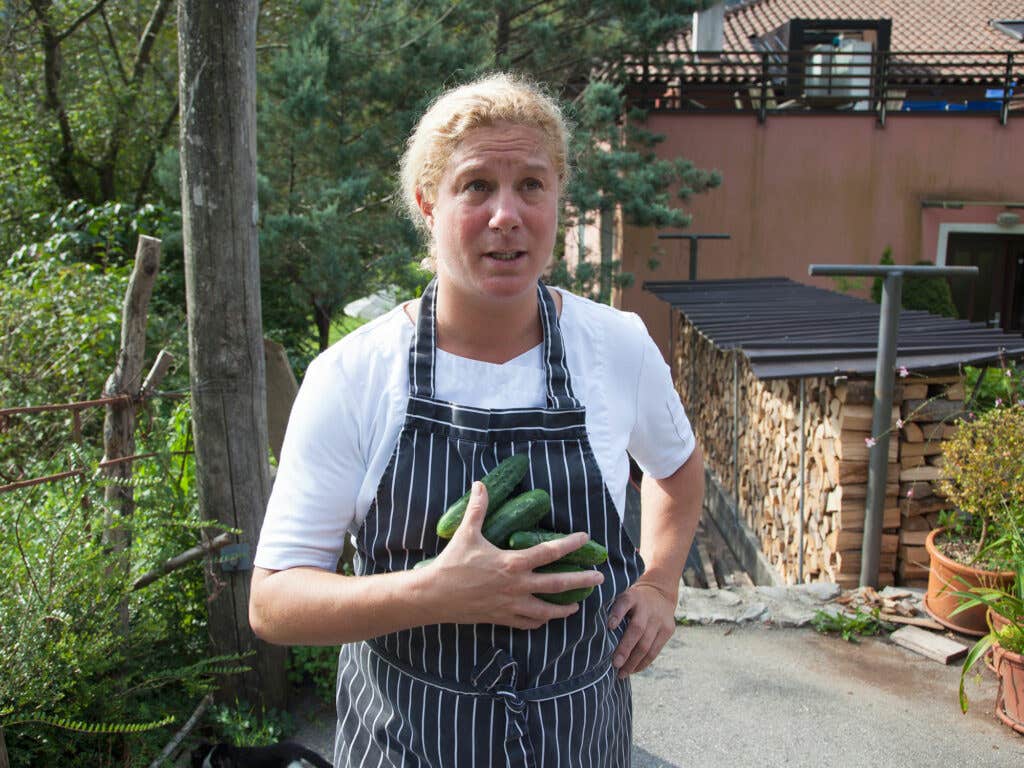
Now the trout in the Soča River have 60 percent marble genes. It’s one of the rare cases of using an ingredient that actually helps to preserve that species in nature. “When you bring to life something from your environment it makes you proud,” Roš says.
When we arrived back at Hiša Franko, a neighbor had just brought in more black trumpet mushrooms than Roš really needed, but she bought everything he had anyway. They’ll experiment with the ones they aren’t going to serve, maybe ferment some, she tells me. Another forager was coming in soon with some berries from the mountain. The same thing will happen. It’s more work for her, but she doesn’t doubt the process.
“We’re just a house in the countryside,” she says, “that’s trying to help everyone grow together.”
Keep Reading
Continue to Next Story










